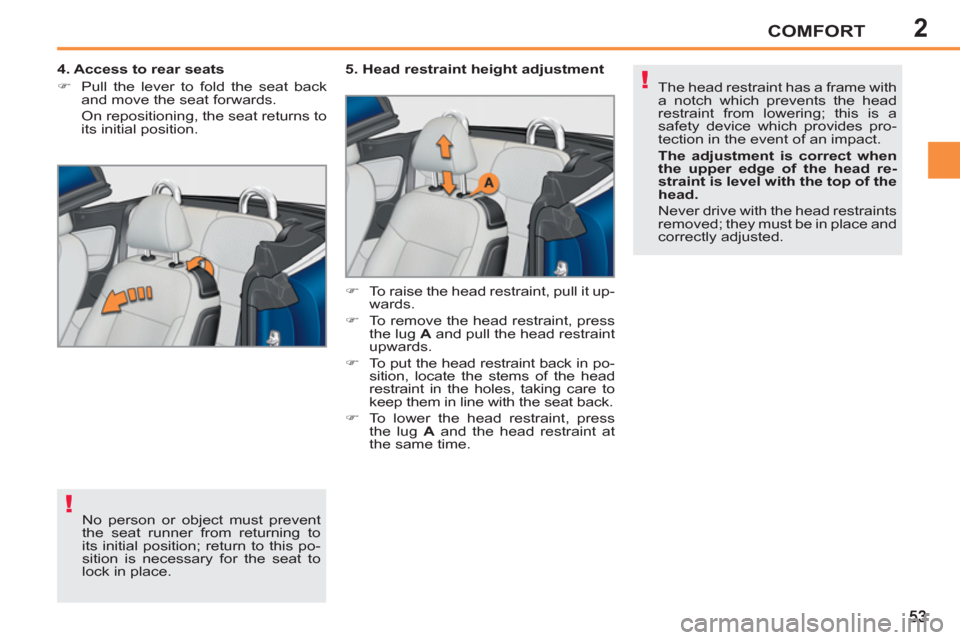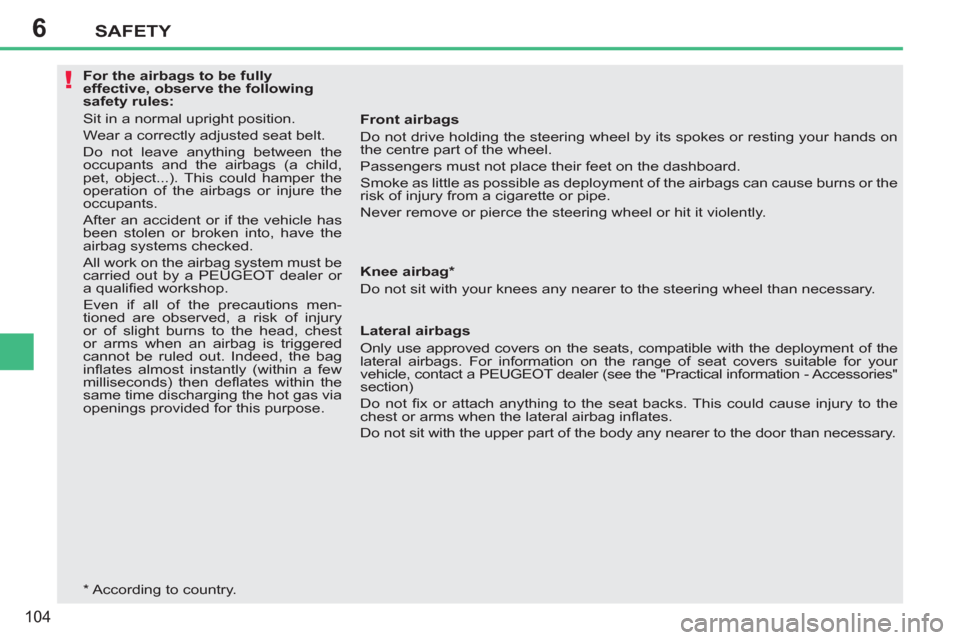Page 21 of 224

19
Limit the causes of excess
consumption
Spread loads throughout the vehicle;
place the heaviest items in the bottom
of the boot, as close as possible to the
rear seats.
Limit the loads carried in the vehicle
and reduce wind resistance (roof bars,
roof rack, bicycle carrier, trailer...). Use
a roof box in preference.
Remove roof bars and roof racks after
use.
At the end of winter, remove snow
tyres and refi t your summer tyres.
Observe the recommendations
on maintenance
Check the tyre pressures regularly,
when cold, referring to the label in the
door aperture, driver’s side.
Carry out this check in particular:
- before a long journey,
- at each change of season,
- after a long period out of use.
Don’t forget the spare wheel and the
tyres on any trailer or caravan.
Have your vehicle serviced regularly
(engine oil, oil fi lter, air fi lter...) and ob-
serve the schedule of operations rec-
ommended by the manufacturer.
When refuelling, do not continue after
the 3 rd cut-off of the nozzle to avoid
any overfl ow.
At the wheel of your new vehicle,
it is only after the fi rst 1 800 miles
(3 000 kilometres) that you will see the
fuel consumption settle down to a con-
sistent average.
Page 55 of 224

2
!
!
COMFORT
No person or object must prevent
the seat runner from returning to
its initial position; return to this po-
sition is necessary for the seat to
lock in place.
4. Access to rear seats
�)
Pull the lever to fold the seat back
and move the seat forwards.
On repositioning, the seat returns to
its initial position.
5. Head restraint height adjustment
�)
To raise the head restraint, pull it up-
wards.
�)
To remove the head restraint, press
the lug A
and pull the head restraint
upwards.
�)
To put the head restraint back in po-
sition, locate the stems of the head
restraint in the holes, taking care to
keep them in line with the seat back.
�)
To lower the head restraint, press
the lug A
and the head restraint at
the same time. The head restraint has a frame with
a notch which prevents the head
restraint from lowering; this is a
safety device which provides pro-
tection in the event of an impact.
The adjustment is correct when
the upper edge of the head re-
straint is level with the top of the
head.
Never drive with the head restraints
removed; they must be in place and
correctly adjusted.
Page 106 of 224

6
!
SAFETY
104
For the airbags to be fully
effective, observe the following
safety rules:
Sit in a normal upright position.
Wear a correctly adjusted seat belt.
Do not leave anything between the
occupants and the airbags (a child,
pet, object...). This could hamper the
operation of the airbags or injure the
occupants.
After an accident or if the vehicle has
been stolen or broken into, have the
airbag systems checked.
All work on the airbag system must be
carried out by a PEUGEOT dealer or
a qualifi ed workshop.
Even if all of the precautions men-
tioned are observed, a risk of injury
or of slight burns to the head, chest
or arms when an airbag is triggered
cannot be ruled out. Indeed, the bag
infl ates almost instantly (within a few
milliseconds) then defl ates within the
same time discharging the hot gas via
openings provided for this purpose.
*
According to country.
Front airbags
Do not drive holding the steering wheel by its spokes or resting your hands on
the centre part of the wheel.
Passengers must not place their feet on the dashboard.
Smoke as little as possible as deployment of the airbags can cause burns or the
risk of injury from a cigarette or pipe.
Never remove or pierce the steering wheel or hit it violently.
Knee airbag *
Do not sit with your knees any nearer to the steering wheel than necessary.
Lateral airbags
Only use approved covers on the seats, compatible with the deployment of the
lateral airbags. For information on the range of seat covers suitable for your
vehicle, contact a PEUGEOT dealer (see the "Practical information - Accessories"
section)
Do not fi x or attach anything to the seat backs. This could cause injury to the
chest or arms when the lateral airbag infl ates.
Do not sit with the upper part of the body any nearer to the door than necessary.